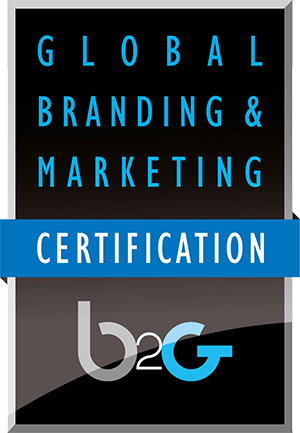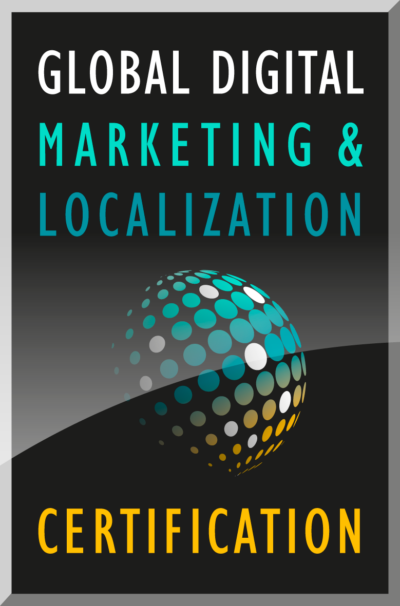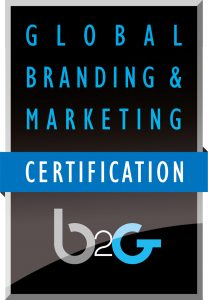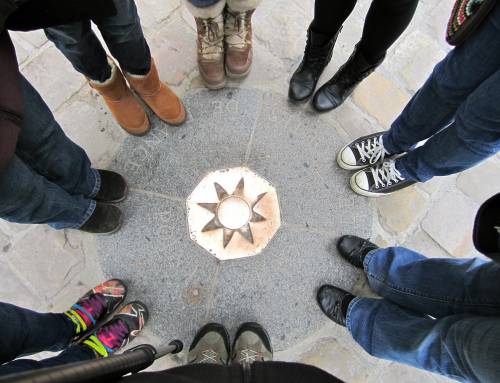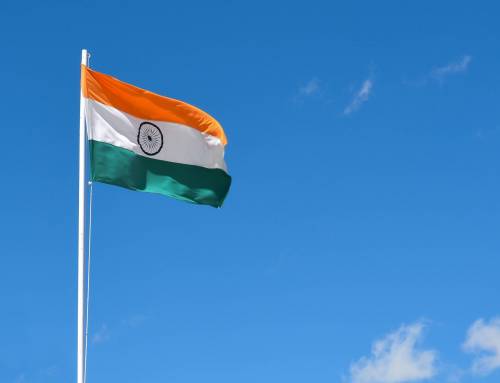This is a paper presented by Maren Baetje-Mbaye, a recent graduate of both the Global Digital Marketing and Localization Certification (GDMLC) and the Global Branding and Marketing Certification (GBMC) programs. This paper presents the work being produced by students of The Localization Institute’s Global Branding and Marketing program. The contents of this Paper are presented to create discussion in the global marketing industry on this topic; the contents of this paper are not to be considered an adopted standard of any kind. This does not represent the official position of Brand2Global Conference, The Localization Institute, or the author’s organization.
“We need to localize our company tagline.”
This or a similarly formulated request will keep you on your toes and up at night.
The tagline will represent your brand and influence how it is perceived by your customers. The branding team has spent weeks or months perfecting the slogan; investigated its availability; researched how it resonates with the public; surveyed customers and followers; and now you are asked to provide an equivalent in five languages for seven markets in just a few days.
This is the moment where the education should start – at the latest.
What has to be understood is that this type of task should never be a simple translation job. Even the best translation will never provide a 100% equivalent. There will always be nuances of meaning and, with that, connotations added and/or removed.
To get as close as possible, taglines and the brand should reflect global values. If they don’t, it will be impossible to create perception of the brand in a specific market that is comparable to the perception in the original market. For instance, a brand reflecting a high level of individuality as a cultural standard will most likely not appeal to consumers who expect a more collectivist message.
Three Approaches
- Translation
- Transcreation
- The original language
So, what is the challenge?
- Translation
Translation conveys the message for the language of origin but may not resonate in the new target market. In some cases, the translation cannot be understood at all because concepts do not overlap sufficiently or are simply not known. A typical case for blunders. Because it’s not a serious option, I will not expand on it further.
- Transcreation
With transcreation, the message is modified and adapted to the expectations of the new target market.
However, if the message diverts too much from the original, the perception of the brand may differ so much that for globally oriented consumers these messages may clash or even contradict each other. This can dilute the brand image and negatively impact the authenticity and credibility of the brand. Also, accompanying materials such as video clips, website messaging and other collateral will need to support these different brand images. This often results in double effort and higher costs for creative teams.
A prerequisite for a headquarter-led, consistent branding strategy is the adherence to a corporate policy to create a brand and associated communication that reflects and addresses universal values like happiness, equality, honesty or love.
A slogan that works well and is widely used with very similar meaning is McDonald’s “I’m lovin’ it” which translates to, for example, “Ich liebe es” (Germany) and “C’est ça que j’aime” (France) because it targets a universal value.
However, studies have demonstrated that cultures, although sharing universal values, may differ in their value hierarchies and therefore the impact of the message may vary as well.
There will still be some level of adaption required to achieve a higher degree of identification and persuasion in particular markets, but it will be easier to keep the message consistent and thus authentic.
- The Original Language
The third option that I would like to explore a little more in detail is the practice of leaving the tagline in the original language.
Examples:
- Das Beste oder nichts (German, Mercedes-Benz)
- Vorsprung durch Technik (German, Audi)
- Das Auto (German, VW)
- Time to live free(er). All for freedom. Freedom for all (US English, Harley Davidson)
Studies have given good reasons to believe that slogans in a foreign language (even if the consumer is proficient in that language) are more difficult to understand. Also, slogans in a foreign language evoke somewhat different associations than those in the consumers’ first language. Furthermore, research has demonstrated that the emotional connotations of words in people’s second language are not as intense as those in their first language. You may have noticed that swearing in a foreign language “feels” a lot easier and less violating than in your first language.
What stands out positively is the insight that a tagline in a foreign language may attract more attention as it triggers curiosity.
Also surprisingly, studies have shown that comprehension of foreign languages only plays a minor role in their effectiveness. This is especially true and increases the power of persuasion if the language is congruent with the product’s prototypical country-of-origin. Consequently, it’s not surprising that Germany —home to BMW, Audi, Mercedes-Benz, and Volkswagen—boldly uses slogans like “Das Auto,” whereas Nivea (another German brand) does not advertise with German slogans because Germany isn’t typically associated with products in the beauty industry.
Another interesting example of the above is Audi. They localized their native tagline “Vorsprung durch Technik” (Advancement Through Technology) into Japanese as 技術による先進, which is a literal translation. Interestingly however, they hardly ever use the Japanese tagline but prefer the original German one. Cost savings may be one reason, but it’s more likely an intentional marketing decision because the German version produces a positive impression in the market. German technology is, after all, very highly regarded in Japan. Furthermore, the Japanese tend to treat foreign language as a “decoration” which helps with the above approach.
Test Before You Launch
Regardless your approach, it’s always a good idea to test your campaigns before you launch them. Not doing so can be risky in a number of ways.
The human brain, in its constant attempt to proactively make meaning of things, will use its full powers of imagination and interpretation to do so. The shorter and more cryptic the message, the more room there is for interpretation. It also plays a role if the tagline stands for itself or is presented in combination with a logo. Does the shape of the logo resemble a symbol? What associations does the color evoke, especially in combination with its shape and slogan in a specific market?
Beware of “back translation”. Especially for speakers of a foreign language with some proficiency, back translation can create funny meanings. The brain will search for the most obvious as this example from Germany’s makeup retailer Douglas shows:
Douglas tried to appear hip when using an English slogan for their stores: “Come in and find out”. Translated back literally this was understood by many Germans as: “Go in and try to find your way out (even: don’t get lost)”.
Numerous studies have shown that native German-language speakers often don’t understand English ads. The Vodafone slogan “Make the Most of Now” produced strange associations with fruit juice (“Most”) for many Germans. “Welcome to the Beck’s Experience” didn’t work so well either because some people confused the last word “experience” with “experiment.”
Whichever approach you go for to create taglines for different markets, do your research and survey target groups. Even with a lot of research and investigation, stay flexible, have a backup plan and be prepared to face the unforeseeable.
Author Bio:
Maren Bätje-Mbaye graduated from the Faculty of Applied Linguistics and Cultural Sciences of the Johannes Gutenberg University of Mainz (Germersheim) and has been working in the localization industry since 2008. At present, she thrives in her current role as Localization Project Manager for LogMeIn (GoToMeeting) managing process-oriented projects, terminology, transcreation and localization of all sorts of business related content for 10+ software services and 7+ languages/markets.
In her previous life, she lived in Italy, Denmark and some months in fascinating Buenos Aires. Nowadays, in her spare time, she enjoys connecting with family and friends around the globe and if she is not visiting them, she is planning the trips to do so. Her biggest (and yet to be mastered) challenge, is to learn Wolof.
Connect with Maren:
This course was very inspiring and provided lots of new useful insights to me. It’s a huge time saver for those wishing to dig deeper into the topic with only limited time available.
Related Articles:
Alcántara-Pilar, J.M.; del Barrio_García, S.; Crespo-Almendros, E.; Porcu, Lucia. Analyzing the Cuttural Diversity of Consumers in the Global Marketplace. (Hershey: IGI Global, 2015)
Bresson, J-P., Soutoul, F. April 2010. “Slogans as Trademarks – European and French Practice”. http://www.wipo.int/wipo_magazine/en/2010/02/article_0007.html (last accessed: August 19, 2018)
Del Vecchio, G. May 2014. “Got Milk? Got Fired: 5 Valuable Lessons That All Executives Must Heed”. https://www.huffingtonpost.com/gene-del-vecchio/got-milk-got-fired-5-valu_b_4938176.html (last accessed: August 19, 2018)
Gpi/Translation Blog. November 2012. “Global Marketing: Tips for a truly global tagline”. http://blog.globalizationpartners.com/global-marketing-tagline.aspx (last accessed: August 19, 2018)
Hornikx, J., van Meurs, F., de Boer, A. Radboud University Nijmegen. “English or a local language in advertising? – The Appreciation of Easy and Difficult English Slogans in the Netherlands”. http://joshornikx.ruhosting.nl/wp-content/uploads/2010/08/Hornikx-et-al.-2010-JBC.pdf (last accessed: August 19, 2018)
Kolowich, L. June 2018. “22 Companies With Really Catchy Slogans & Brand Taglines”. https://blog.hubspot.com/marketing/brand-slogans-and-taglines (last accessed: August 19, 2018)
Lindquist, K. A., MacCormack, J. K., Shablack, H. April 2015. “The role of language in emotion: predictions from psychological constructionism”. https://www.ncbi.nlm.nih.gov/pmc/articles/PMC4396134/ (last accessed: August 19, 2018)
Marsen, S. March 2008. Victoria University, New Zealand “The Role of Meaning in Human Thinking”. https://jetpress.org/v17/marsen.htm (last accessed: August 19, 2018)
McGowan, D. April 2018. “To Localize or Not Localize Your Slogan for Japan”. https://info.moravia.com/blog/to-localize-or-not-localize-your-slogan-or-tagline-for-japan (last accessed: August 19, 2018)
Nederstigt, U., Hilberink-Schulgen, B. October 2017. „Advertising in a Foreign language or the Consumers’ Native Language?“ https://www.tandfonline.com/doi/full/10.1080/08961530.2017.1363008 (last accessed: August 19, 2018)
Raine, G. August 2001. “Lost in the translation / Milk board does without its famous slogan when it woos a Latino audience”. https://www.sfgate.com/business/article/Lost-in-the-translation-Milk-board-does-without-2884230.php (last accessed: August 19, 2018)
Spiegel Online. CHD – with wire reports. December 2008. http://www.spiegel.de/international/germany/come-in-and-find-out-how-germans-really-see-english-ad-slogans-a-596128.html (last accessed: August 19, 2018)
Wikipedia: April 2018. “Rokeach Value Survey” https://en.wikipedia.org/wiki/Rokeach_Value_Survey (last accessed: August 19, 2018)
Disclaimer


